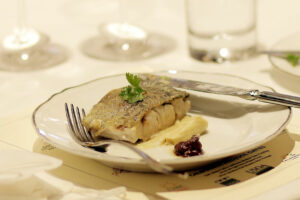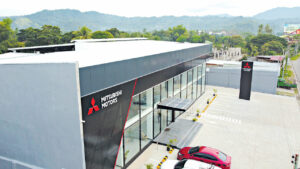A taste of California

WHEN one thinks of California, one thinks about film stars, tech giants, Rodeo Drive, and all the other things movies have taught us. Living in a Los Angeles suburb as a teenager, this wasn’t quite the California experience for this writer. It was driving down where Pat Nixon grew up, and hearing “Strawberry Fields Forever” while passing by (you guessed it) a strawberry field.
It is this pastoral experience that was recalled during a luncheon last week with the USDA Agribusiness Trade Mission to the Philippines (USDA ATM), Buy California Marketing Agreement (CAGROWN), and the Western United States Agricultural Trade Association (WUSATA). The lunch, prepared by Grand Hyatt Manila Executive Chef Mark Hagan, was called “Taste of California,” and brought that state’s agricultural experience to the fore.
The meal stood on the strengths of five products: stone fruits (peaches and the like), olives, raisins, cheese, dates, and, of course, California wine.
THE MEALThe meal kicked off with Grilled California Stone Fruit Salad, with salad leaves, mint leaves, Maldon salt, and extra virgin olive oil. This was paired with a Robert Mondavi Winery Napa Valley Fume Blanc 2018. This pairing tempered the aggressive flavors of the fruit with its own refined fruitiness.
This was followed by a Pan-seared Seabass with California Black Olive Tapenade, paired with a Kendall-Jackson Vintners Reserve Chardonnay 2019. The wine lent verve to the fish, while the tapenade lent it a sense of gravitas, coming off as a perfectly balanced dish.
The main course used California raisins in Roast Pork stuffed with coriander, onion, and lemon; and a pad of fondant potato and asparagus. This was paired with La Crema Sonoma Coast Pinot Noir 2019. The strongly fragrant wine and its more aggressive flavors melded with the soft, fruity flavors of the roast’s sauce, giving it nuance and sophistication.
The cheese course was Seascape Cheese (made with sheep and cow’s milk), served with stone fruit chutney and Lavosh crackers, paired with The Prisoner Wine Napa Valley Red Blend 2019. Most at the table pronounced this pairing the best, with the wine’s fruity flavors (and a surprising note of vanilla) lending color to the cheese. The meal ended with Sticky Toffee California Medjool Date Pudding, paired with a Barefoot Pink Moscato.
THE HUMAN TOUCH“In California, we have a real challenge with the availability of labor. We have different companies and trade associations that are doing as much research as they can to automate labor so we don’t have to depend on people to do it,” Christine Birdsong, Undersecretary of the California Department of Food and Agriculture (CDFA), said as she updated media guests during the lunch about agricultural developments in California.
“The challenge is that so many of our specialty crops really need that fine skill, that human touch — whether it’s plucking strawberries or blueberries… that’s the biggest (issue). It’s the labor shortage and trying to automate more at work.”
The labor shortage issue affects California’s role in the world’s supply chain, noticed today not just in the United States but across the world, with dwindling supplies in stores and in restaurants.
“It is not back to normal. California has the same challenges that the Philippines does as well, with a lot of shipping lines. They’ll come to LA and Long Beach, then they don’t go to Oakland, and Oakland is very important for agricultural exports. We are constantly trying to highlight the problem and let everybody know it’s the shipping lines they need to restore,” said Ms. Birdsong. At present, a rail system that could alleviate the problem is also hampered by the labor shortage. “Again, it comes down to labor.
THE PINOY-US CONNECTIONMs. Birdsong spoke about the choice of the products highlighted for the luncheon. Besides their seasonality, she said, “All of these are already here [in the Philippines] — except for the dates.”
“These are high-value commodities,” she said. “I know that they’re… probably located in the retail outlets that are going to be really appropriate for them. We think that they just taste so good, and we know that there’s such a population in the Philippines, and our connection with Filipino-Americans and Americans living here, that it just seems like a very natural crossover to spread these flavors.”
Over a third of the USA’s vegetables and two-thirds of its fruits and nuts are grown in California, according to the CDFA website, and agricultural exports from the states totaled $20.8 billion in 2020. Ms. Birdsong makes a case for why things in California grow that way. “The California sunshine!”
“That’s corny. But I think it really is the combination of the Mediterranean climate, our rich soils, especially throughout the Central Valley, makes it a particularly fertile growing region. We can grow things almost year-round and just an absolute variety of crops,” she said.
“I think there’s just this mystique around California: this specialness about it, as a state, as a place, and some of it is Hollywood and today, it is the tech industry. It just really does seem like a land where there’s so much opportunity and so much promise, and creativity. Our farmers really do reflect that as well, in their innovation and their resourcefulness,” she pointed out.
“If you can make it, you are doing something right.” — JLG




